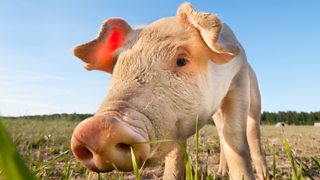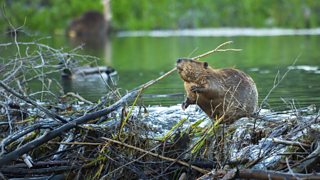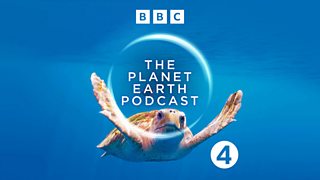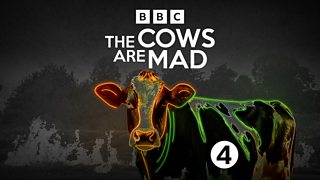How do we rescue our rivers?
Stories about the UK’s rivers have been flooding the headlines in recent years. And it’s not good news: sewage and chemical pollution are at worrying levels, putting both freshwater ecosystems and human health at risk.
But have things always been this bad? In the latest episode of Radio 4’s Rare Earth, ocean scientist Helen Czerski, journalist Tom Heap and guests discuss the health of our rivers and unearth some surprising facts about their past.
These are some of their most intriguing findings…
Disputes about rivers go as far back as the Magna Carta
Signed in 1215, the Magna Carta included a requirement that all weirs must be removed from the Thames, the Medway and all the other rivers in England. Helen explains that, “The king had basically blocked up the river by putting weirs to catch fish and everybody else was cross about it.” And as far back as the 12th century, law prohibited people from blocking rivers, the rule being that you must be able to fit a pig sideways in the gap.

Victorian London was hit by a crisis called the Great Stink
In 1858, the Thames became so polluted it produced a horrific stench. The eminent scientist Michael Faraday offered this evocative first-hand description: “Near the bridges the feculence rolled up in clouds so dense that they were visible at the surface. The whole river was a real sewer.”
Helen explains that, “People had been using London as just a waste disposal system, and eventually the river just failed to cope. So, it was full of stinky, horrible, dead things and leftovers from abattoirs and all this kind of thing. This became a crisis and no one could agree on what to do about it because it was clearly so expensive to fix it.”
Ultimately, the Great Stink led to the creation of London’s sewerage system, but it would take another 20 years to build.
Bird poo is behind the problematic wastewater system we have today
Fifteen years before the Great Stink, the social reformer Edwin Chadwick proposed keeping sewage in its own system, separate from other wastewater, and diverting it away from the river to fertilise fields. But Chadwick’s system never took off and seabird poo – or guano – is part of the reason why.

We almost had a very embarrassing London Olympics.
Alastair Chisholm of the Chartered Institution of Water and Environmental Management explains that guano had begun to be imported from South America as a low cost source of fertiliser. He says, “Effectively it was cheaper to import [fertiliser] and it was easier to engineer just one pipe – which took both the [waste] water and the foul sewage – than build two pipes everywhere, and these specialist treatment works.”
As a result, we still have a ‘combined sewer model' today, and it’s causing a lot of problems…
Britain exported its dysfunctional sewage system around the world
In our combined system, water from toilets and sinks goes into the same sewers as rainwater. It’s designed so that during heavy downpours an overflow system operates to stop sewage backing up and spilling into people’s homes, and it’s released into rivers and the sea instead.
But over time, new housing developments have increased pressure on the pipe network. Now, Alastair explains, “Those overflows are overflowing far more frequently, not [just] in extreme weather, often in quite regular rainfall events.” So a lot more sewage is entering our waterways.
To make things worse, Britain installed this system in its colonies too. Environmental writer Tim Smedley, says that, “Internationally only about 80% of sewage outflow is treated. Part of that is due to great British engineering.”
London almost ran out of water in 2012
It’s not unheard of for whole cities to run out of water. Tim explains that Chennai, India’s seventh largest city, has suffered this problem, and Cape Town in South Africa has narrowly averted a total drought after a collective effort to conserve water. London, too, came very close to a crisis in the summer of 2012. “We almost had a very embarrassing London Olympics,” Tim reveals.
Tiny fleas called daphnia could be the future of water purification
Scientist Luisa Orsini of Birmingham University is leading research into the potential for water fleas to filter chemicals and microplastics from water. She says that, “You can think of them as small vacuum cleaners. They take up everything that is nasty, leftover, and this includes forever chemicals such as pharmaceuticals or industrial chemicals.”

Luisa explains that daphnia are so good at processing chemicals because they can lie dormant for hundreds of years. This means researchers can use 19th-century strains that have never been exposed to modern pollution. “They have been less hit by the stress of other chemicals and therefore are more… tolerant to them. That means they can remove them more efficiently.”
Beavers could help nurse our rivers back to health
Tim says that beavers were hunted to extinction in this country in 1789, but our water system was originally based on these natural engineers’ habitats. “Our rivers should look a lot different to how they look today. We straightened them, canalised them, disconnected them from floodplains. They should be wider, strewn with beaver dams going out on to the floodplains, and floodplain meadows especially.”
Listen to Rare Earth: How do we get our healthy rivers back?
Essential listening on Radio 4
-
![]()
The Artificial Human
Aleks Krotoski and Kevin Fong answer the questions we're all asking about AI.
-
![]()
The Planet Earth Podcast
Exclusive insights from the acclaimed natural history storytellers that brought us the Planet Earth series.
-
![]()
The Cows are Mad
Science has still failed to definitively answer two major questions about mad cow disease - where did it come from and how did humans get it?
-
![]()
39 Ways to Save the Planet
39 ideas to relieve the stress that climate change is exerting on the planet.





